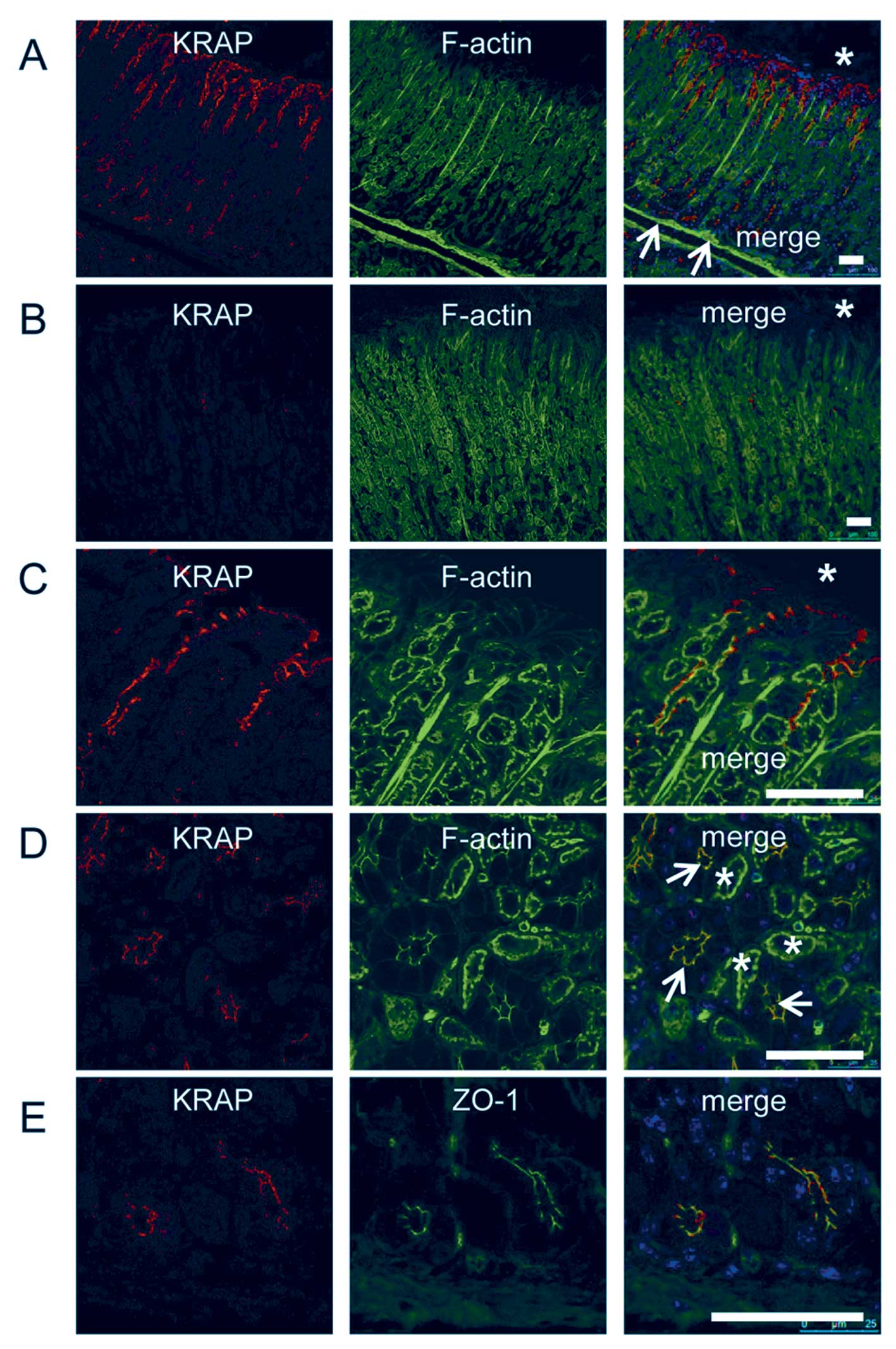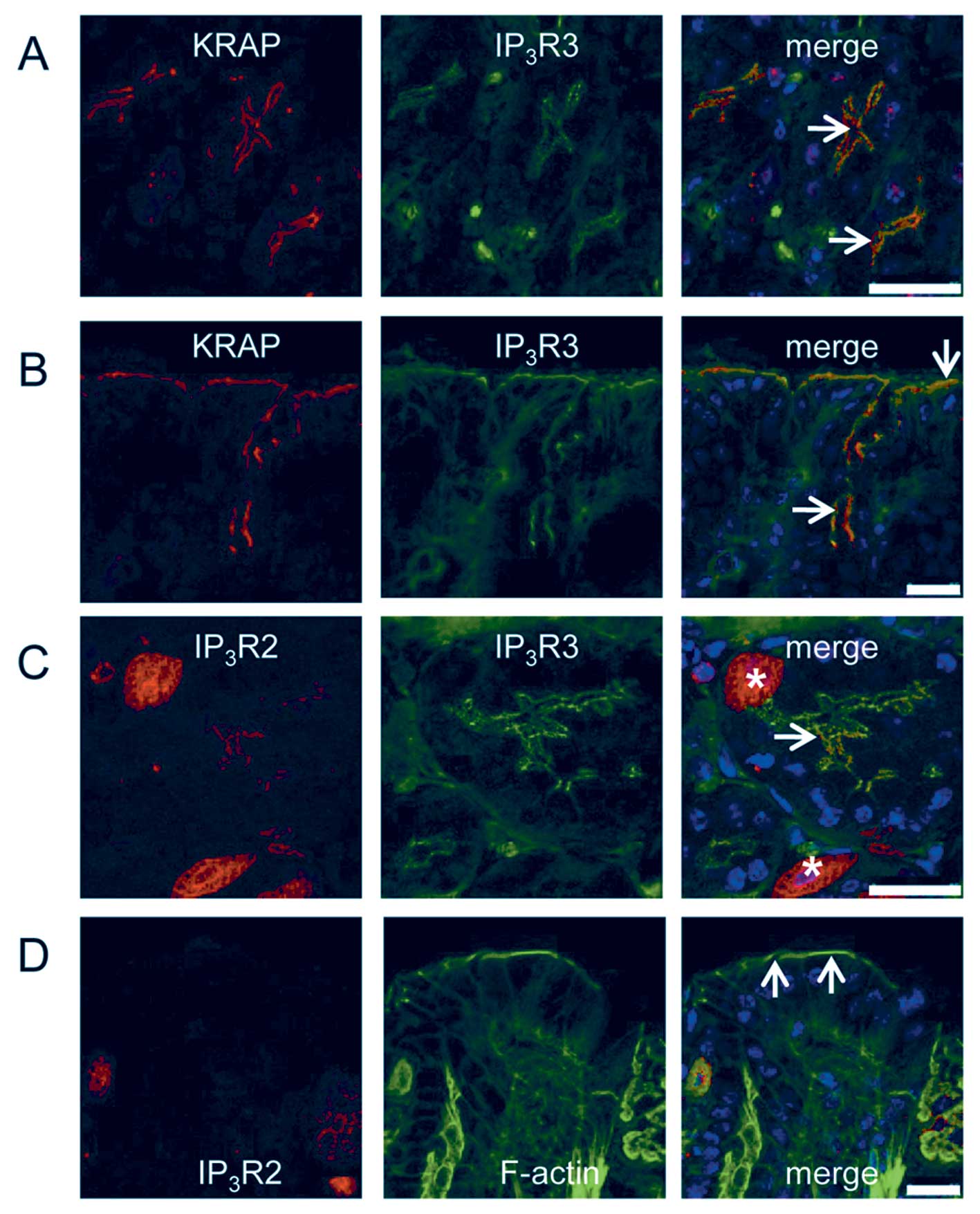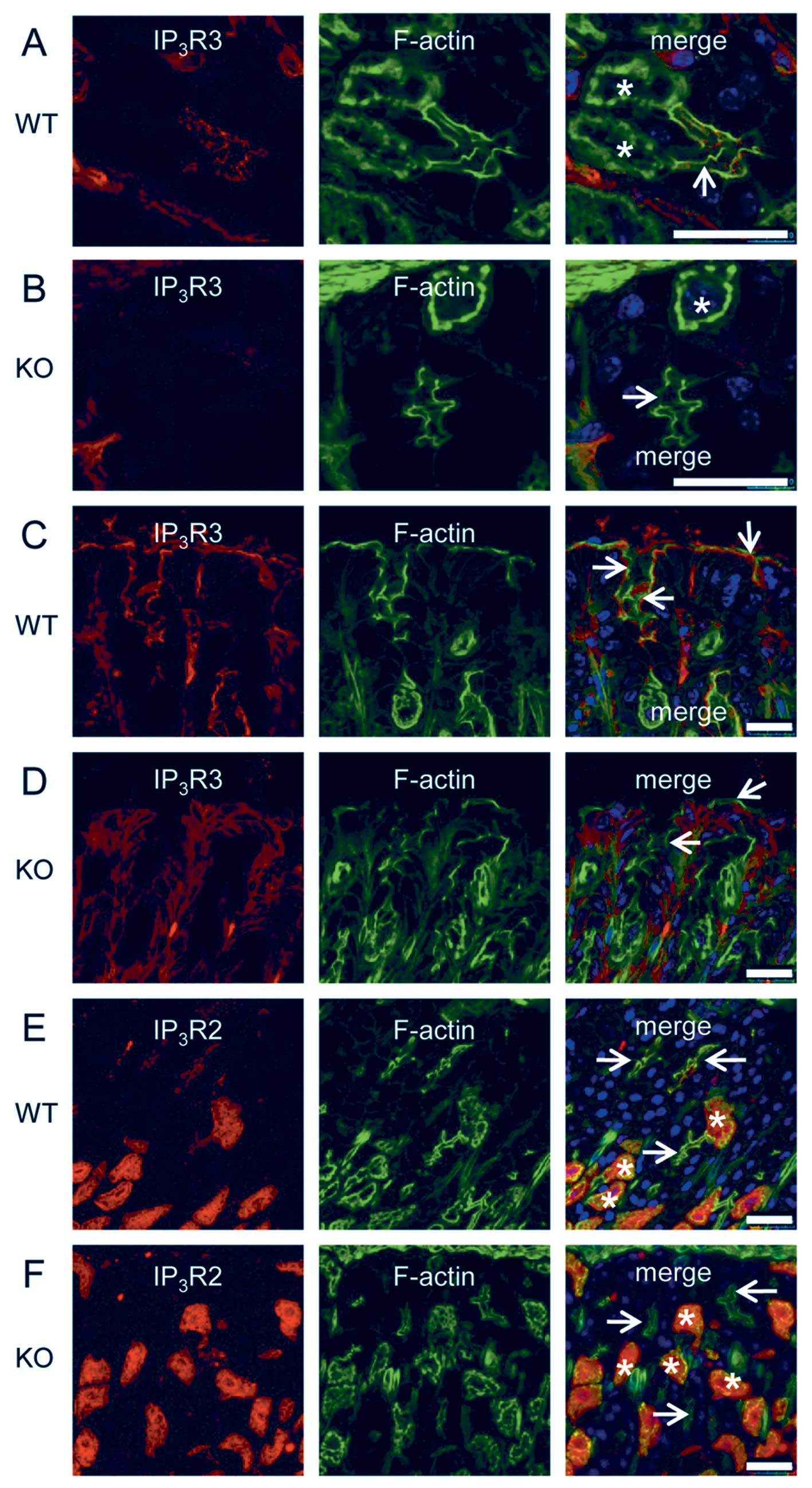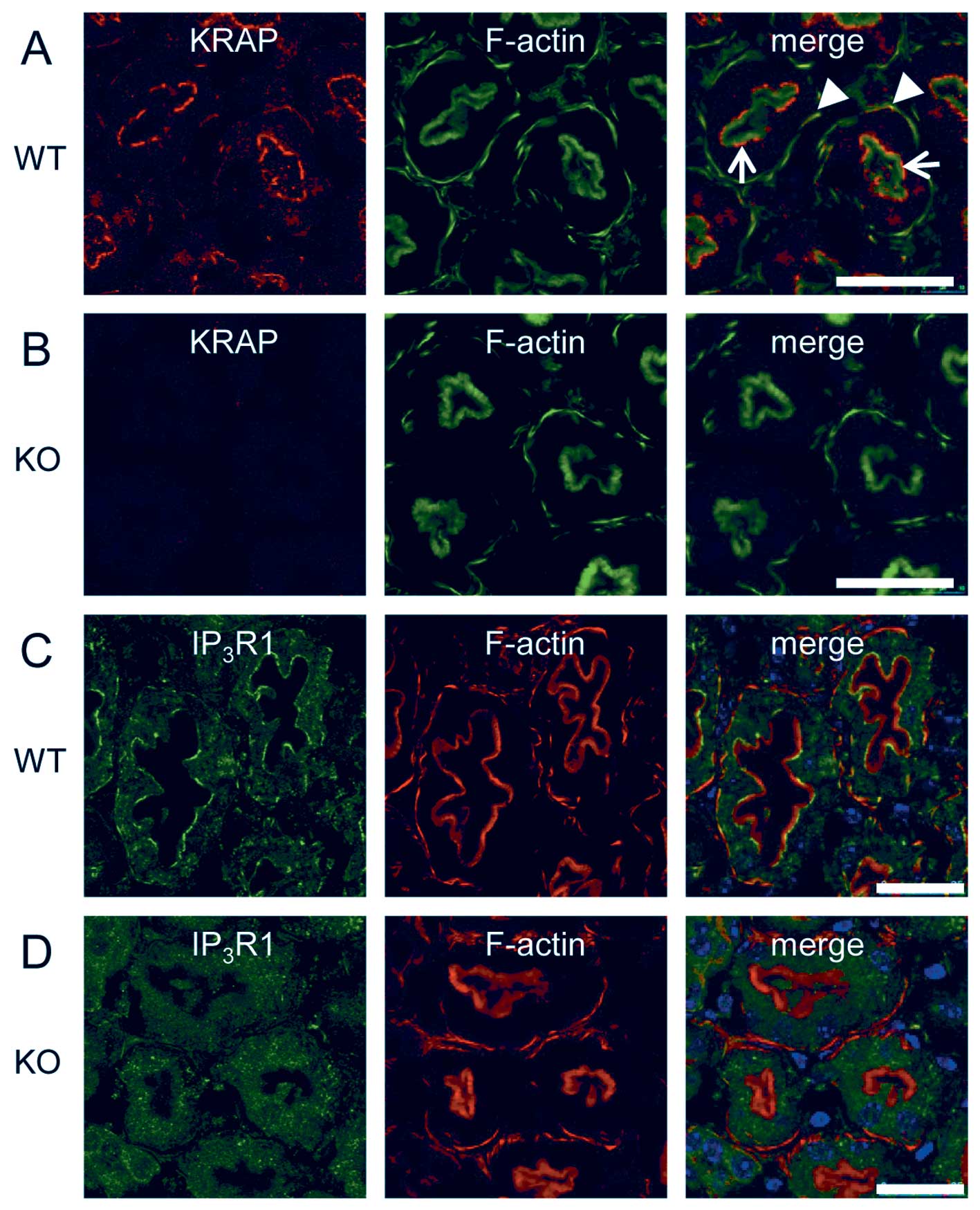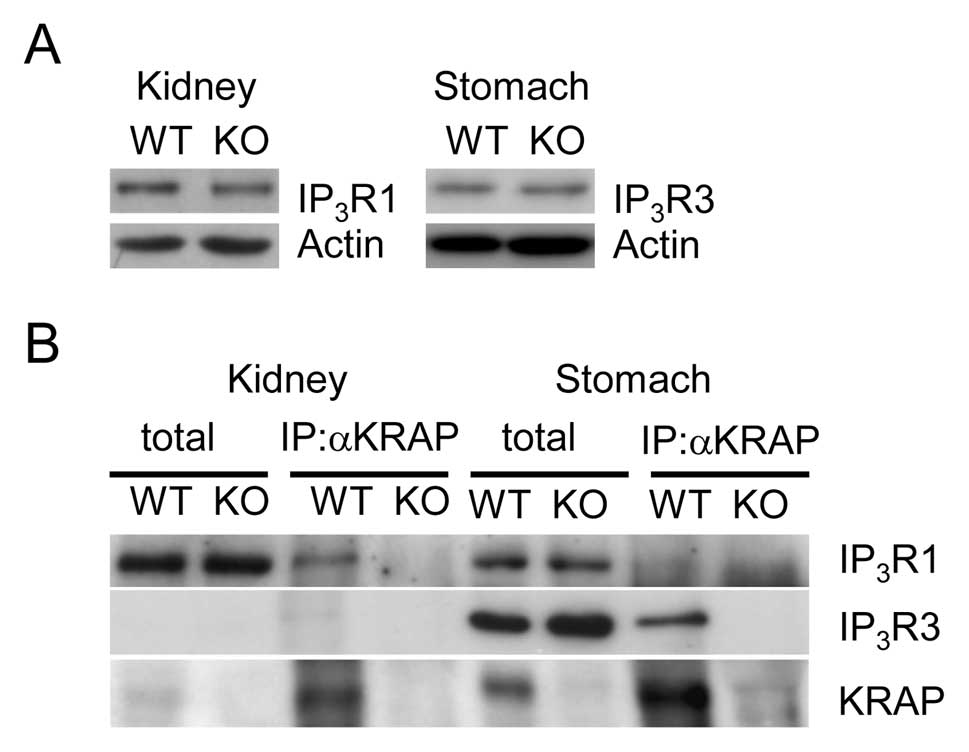|
1
|
Ross CA, Danoff SK, Schell MJ, Snyder SH
and Ullrich A: Three additional inositol 1,4,5-trisphosphate
receptors: molecular cloning and differential localization in brain
and peripheral tissues. Proc Natl Acad Sci USA. 89:4265–4269. 1992.
View Article : Google Scholar
|
|
2
|
Sharp AH, McPherson PS, Dawson TM, Aoki C,
Campbell KP and Snyder SH: Differential immunohistochemical
localization of inositol 1,4,5-trisphosphate- and
ryanodine-sensitive Ca2+ release channels in rat brain.
J Neurosci. 13:3051–3063. 1993.PubMed/NCBI
|
|
3
|
Sugiyama T, Yamamoto-Hino M, Miyawaki A,
Furuichi T, Mikoshiba K and Hasegawa M: Subtypes of inositol
1,4,5-trisphosphate receptor in human hematopoietic cell lines:
dynamic aspects of their cell-type specific expression. FEBS Lett.
349:191–196. 1994. View Article : Google Scholar : PubMed/NCBI
|
|
4
|
Newton CL, Mignery GA and Südhof TC:
Co-expression in vertebrate tissues and cell lines of multiple
inositol 1,4,5-trisphosphate (InsP3) receptors with distinct
affinities for InsP3. J Biol Chem. 269:28613–28619. 1994.PubMed/NCBI
|
|
5
|
Wojcikiewicz RJ: Type I, II, and III
inositol 1,4,5-trisphosphate receptors are unequally susceptible to
down-regulation and are expressed in markedly different proportions
in different cell types. J Biol Chem. 270:11678–11683. 1995.
View Article : Google Scholar : PubMed/NCBI
|
|
6
|
Jayaraman T, Ondriasová E, Ondrias K,
Harnick DJ and Marks AR: The inositol 1,4,5-trisphosphate receptor
is essential for T-cell receptor signaling. Proc Natl Acad Sci USA.
92:6007–6011. 1995. View Article : Google Scholar : PubMed/NCBI
|
|
7
|
Khan AA, Soloski MJ, Sharp AH, Schilling
G, Sabatini DM, Li SH, Ross CA and Snyder SH: Lymphocyte apoptosis:
mediation by increased type 3 inositol 1,4,5-trisphosphate
receptor. Science. 273:503–507. 1996. View Article : Google Scholar : PubMed/NCBI
|
|
8
|
Sugawara H, Kurosaki M, Takata M and
Kurosaki T: Genetic evidence for involvement of type 1, type 2 and
type 3 inositol 1,4,5-trisphosphate receptors in signal
transduction through the B-cell antigen receptor. EMBO J.
16:3078–3088. 1997. View Article : Google Scholar : PubMed/NCBI
|
|
9
|
Scharenberg AM, Humphries LA and Rawlings
DJ: Calcium signalling and cell-fate choice in B cells. Nat Rev
Immunol. 7:778–789. 2007. View
Article : Google Scholar : PubMed/NCBI
|
|
10
|
deSouza N, Cui J, Dura M, McDonald TV and
Marks AR: A function for tyrosine phosphorylation of type 1
inositol 1,4,5-trisphosphate receptor in lymphocyte activation. J
Cell Biol. 179:923–934. 2007. View Article : Google Scholar : PubMed/NCBI
|
|
11
|
Patterson RL, Boehning D and Snyder SH:
Inositol 1,4,5-trisphosphate receptors as signal integrators. Annu
Rev Biochem. 73:437–465. 2004. View Article : Google Scholar : PubMed/NCBI
|
|
12
|
Bezprozvanny I: The inositol
1,4,5-trisphosphate receptors. Cell Calcium. 38:261–272. 2005.
View Article : Google Scholar
|
|
13
|
Foskett JK, White C, Cheung KH and Mak DO:
Inositol trisphosphate receptor Ca2+ release channels.
Physiol Rev. 87:593–658. 2007. View Article : Google Scholar
|
|
14
|
Mikoshiba K: IP3 receptor/Ca2+
channel: from discovery to new signaling concepts. J Neurochem.
102:1426–1446. 2007.PubMed/NCBI
|
|
15
|
Zhang S, Fritz N, Ibarra C and Uhlén P:
Inositol 1,4,5-trisphosphate receptor subtype-specific regulation
of calcium oscillations. Neurochem Res. 36:1175–1185. 2011.
View Article : Google Scholar : PubMed/NCBI
|
|
16
|
Inokuchi J, Komiya M, Baba I, Naito S,
Sasazuki T and Shirasawa S: Deregulated expression of KRAP, a novel
gene encoding actin-interacting protein, in human colon cancer
cells. J Hum Genet. 49:46–52. 2004. View Article : Google Scholar : PubMed/NCBI
|
|
17
|
Fujimoto T, Miyasaka K, Koyanagi M,
Tsunoda T, Baba I, Doi K, Ohta M, et al: Altered energy homeostasis
and resistance to diet-induced obesity in KRAP-deficient mice. PLoS
One. 4:e42402009. View Article : Google Scholar : PubMed/NCBI
|
|
18
|
Miyasaka K, Fujimoto T, Kawanami T,
Takiguchi S, Jimi A, Funakoshi A and Shirasawa S: Pancreatic
hypertrophy in Ki-ras-induced actin-interacting protein gene
knockout mice. Pancreas. 40:79–83. 2011. View Article : Google Scholar : PubMed/NCBI
|
|
19
|
Fujimoto T, Koyanagi M, Baba I,
Nakabayashi K, Kato N, Sasazuki T and Shirasawa S: Analysis of KRAP
expression and localization, and genes regulated by KRAP in a human
colon cancer cell line. J Hum Genet. 52:978–984. 2007. View Article : Google Scholar : PubMed/NCBI
|
|
20
|
Fujimoto T, Machida T, Tanaka Y, Tsunoda
T, Doi K, Ota T, Okamura T, et al: KRAS-induced actin-interacting
protein is required for the proper localization of inositol
1,4,5-trisphosphate receptor in the epithelial cells. Biochem
Biophys Res Commun. 407:438–443. 2011. View Article : Google Scholar : PubMed/NCBI
|
|
21
|
Fujimoto T, Machida T, Tsunoda T, Doi K,
Ota T, Kuroki M and Shirasawa S: Determination of the critical
region of KRAS-induced actin-interacting protein for the
interaction with inositol 1,4,5-trisphosphate receptor. Biochem
Biophys Res Commun. 408:282–286. 2011. View Article : Google Scholar : PubMed/NCBI
|
|
22
|
Mills JC, Andersson N, Stappenbeck TS,
Chen CC and Gordon JI: Molecular characterization of mouse gastric
zymogenic cells. J Biol Chem. 278:46138–46145. 2003. View Article : Google Scholar : PubMed/NCBI
|
|
23
|
Zhu L, Hatakeyama J, Zhang B, Makdisi J,
Ender C and Forte JG: Novel insights of the gastric gland
organization revealed by chief cell specific expression of moesin.
Am J Physiol Gastrointest Liver Physiol. 296:G185–G195. 2009.
View Article : Google Scholar : PubMed/NCBI
|
|
24
|
Schubert ML: Gastric exocrine and
endocrine secretion. Curr Opin Gastroenterol. 25:529–536. 2009.
View Article : Google Scholar
|
|
25
|
Futatsugi A, Nakamura T, Yamada MK, Ebisui
E, Nakamura K, Uchida K, Kitaguchi T, et al: IP3 receptor types 2
and 3 mediate exocrine secretion underlying energy metabolism.
Science. 309:2232–2234. 2005. View Article : Google Scholar : PubMed/NCBI
|
|
26
|
Wright SH and Dantzler WH: Molecular and
cellular physiology of renal organic cation and anion transport.
Physiol Rev. 84:987–1049. 2004. View Article : Google Scholar : PubMed/NCBI
|
|
27
|
Alrefai WA and Gill RK: Bile acid
transporters: structure, function, regulation and
pathophysiological implications. Pharm Res. 24:1803–1823. 2007.
View Article : Google Scholar : PubMed/NCBI
|
|
28
|
Husain S and Thrower E: Molecular and
cellular regulation of pancreatic acinar cell function. Curr Opin
Gastroenterol. 25:466–471. 2009. View Article : Google Scholar : PubMed/NCBI
|
|
29
|
Anzai N, Jutabha P, Kanai Y and Endou H:
Integrated physiology of proximal tubular organic anion transport.
Curr Opin Nephrol Hypertens. 14:472–479. 2005. View Article : Google Scholar : PubMed/NCBI
|
|
30
|
Hernando N, Wagner CA, Gisler SM, Biber J
and Murer H: PDZ proteins and proximal ion transport. Curr Opin
Nephrol Hypertens. 13:569–574. 2004. View Article : Google Scholar : PubMed/NCBI
|
|
31
|
Brône B and Eggermont J: PDZ proteins
retain and regulate membrane transporters in polarized epithelial
cell membranes. Am J Physiol Cell Physiol. 288:C20–C29.
2005.PubMed/NCBI
|















